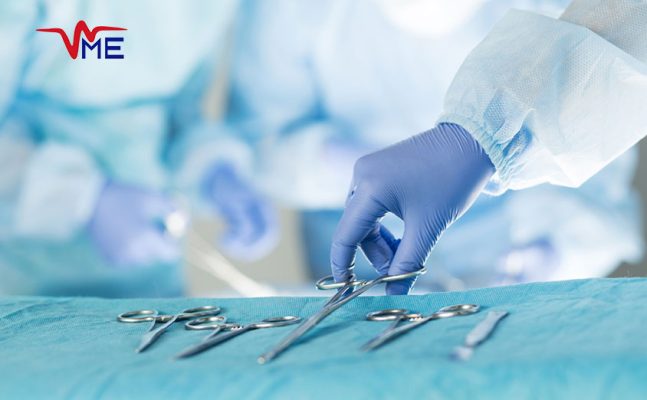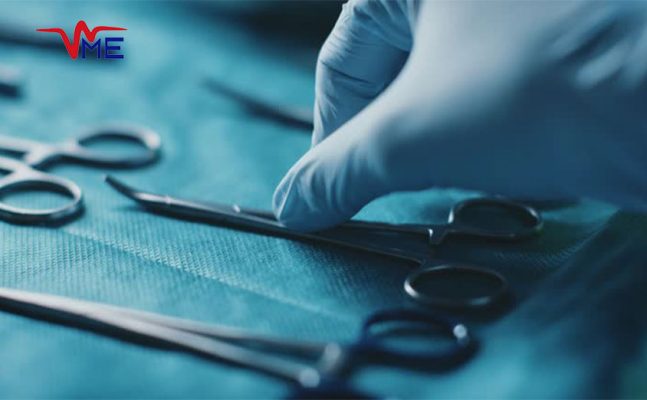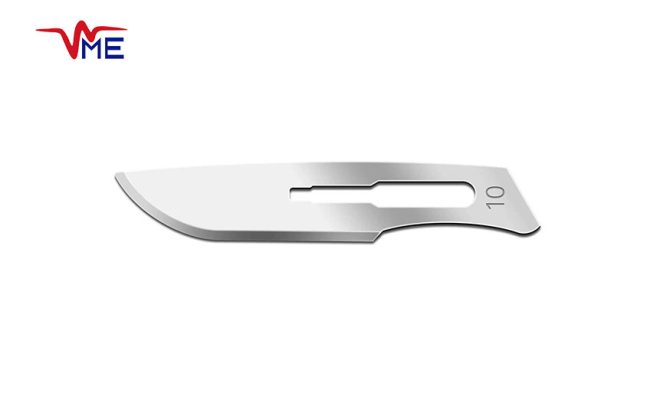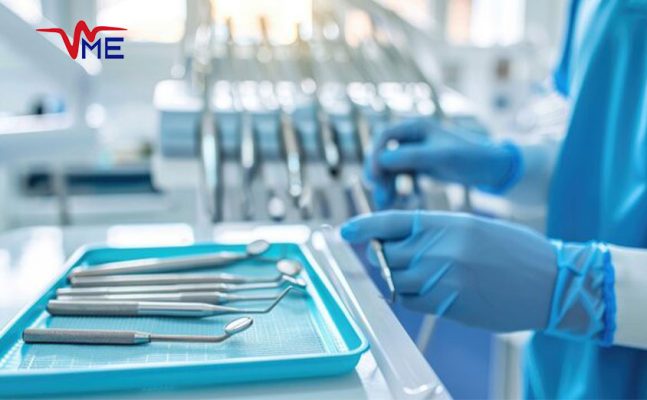Paramount, Surgical Blades
The Importance of High-Quality Surgical Knives
In the operating room, precision is paramount. Every incision, every cut, requires surgical tools that can perform with accuracy and reliability. Among these tools, surgical knives (scalpels) hold a unique and critical role. High-quality surgical knives ensure that surgeons can make precise incisions, control the depth of cuts, and minimize tissue damage. These factors are crucial in achieving successful outcomes, reducing the risk of complications, and promoting faster recovery for patients.
The success of any surgical procedure—from routine operations to complex interventions—depends significantly on the quality of the tools used. Inferior knives may dull quickly, leading to inaccurate cuts and increased risk of complications such as infection or prolonged recovery times. In contrast, high-quality surgical knives enhance surgical precision, reduce the likelihood of complications, and improve overall patient safety.
The Role of Surgical Knives in Precision Cutting
The primary function of a surgical knife is to make clean, precise incisions. The sharpness of the blade is critical, as a dull blade can tear tissues rather than cut through them cleanly. This can cause more tissue trauma, increase bleeding, and prolong the patient’s recovery time. Surgical knives with superior sharpness ensure that surgeons can make smooth, controlled cuts that reduce tissue damage and enhance healing.
Precision cutting is particularly important in delicate surgeries, such as neurosurgery or cardiac surgery, where even the slightest mistake can have serious consequences. High-quality surgical knives allow surgeons to work with confidence, knowing that their instruments will perform consistently and effectively.

Ensuring Patient Safety with High-Quality Tools
Patient safety is the top priority in any surgical procedure. High-quality surgical knives are designed to minimize risks, including the risk of infection and tissue damage. Blades made from medical-grade materials are more resistant to corrosion and can be sterilized without losing their sharpness or integrity. This ensures that each use of the knife meets the highest safety standards.
Moreover, using high-quality surgical knives reduces the chances of surgical complications, such as unintended tissue damage or excessive bleeding. With precise, clean cuts, the risk of post-surgical infections and complications is significantly reduced, leading to better outcomes for the patient.
Key Features of High-Quality Surgical Knives
The design and materials of surgical knives play a significant role in their performance. High-quality surgical knives are distinguished by several key features that set them apart from lower-quality alternatives.
Sharpness and Durability of Blades
The sharpness of a surgical knife’s blade is one of its most important features. A sharper blade allows for more precise incisions with less effort, reducing the risk of tissue trauma. High-quality surgical knives retain their sharpness for longer periods, which means they can be used effectively in multiple procedures before requiring replacement.
Durability is another critical factor. Surgical knives made from high-grade stainless steel, titanium, or ceramic materials offer superior resistance to wear and corrosion. These materials ensure that the knife remains sharp and reliable even after repeated sterilizations and uses.
Material and Sterilization Compatibility
The materials used in surgical knives must be compatible with sterilization processes to ensure the safety of both the patient and the medical staff. Surgical knives made from materials such as high-carbon stainless steel or titanium are not only strong but also highly resistant to corrosion and damage during autoclaving or chemical sterilization. This ensures that the knives remain sterile and effective throughout their use in the operating room.
Additionally, some surgical knives feature coatings, such as diamond or ceramic, which further enhance the blade’s sharpness and durability while maintaining compatibility with sterilization procedures.
Ergonomics for Surgeons’ Ease of Use
Ergonomics is another essential consideration in the design of high-quality surgical knives. Surgeons often perform lengthy procedures that require steady hands and precise movements. An ergonomic design ensures that the knife fits comfortably in the surgeon’s hand, allowing for better control and reducing hand fatigue. Surgical knives with balanced handles and textured grips provide surgeons with the stability and precision needed for delicate operations.
How High-Quality Surgical Knives Improve Outcomes
High-quality surgical knives contribute directly to better patient outcomes by enhancing the surgeon’s ability to perform procedures with precision and control.

Reducing Complications and Infections
Surgical complications can arise from a variety of factors, including the quality of the tools used. High-quality surgical knives make cleaner cuts, which leads to less tissue damage and reduces the risk of postoperative complications. Sharp, precise blades minimize the amount of force required to make an incision, reducing trauma to the surrounding tissues and decreasing the risk of excessive bleeding or infection.
Additionally, high-quality materials that are resistant to corrosion and wear ensure that surgical knives remain sterile and safe for use, further minimizing the risk of infection.
Enhancing Surgical Efficiency
Efficiency in the operating room is critical, especially during complex or time-sensitive procedures. High-quality surgical knives improve efficiency by reducing the time needed to make incisions and perform cuts. A dull or low-quality blade may require multiple passes to achieve the desired result, which not only extends the length of the procedure but also increases the risk of tissue damage. With a sharp, durable knife, surgeons can perform more efficient cuts, reducing the time spent in surgery and lowering the risk of complications.
Supporting Faster Patient Recovery
The use of high-quality surgical knives leads to cleaner, more precise incisions, which in turn promotes faster healing and recovery. When tissue is cut cleanly and with minimal trauma, the body is able to heal more efficiently, reducing the time required for recovery and minimizing scarring. This is particularly important for cosmetic surgeries and procedures where the appearance of scars is a concern.
Patients who experience faster recovery times are less likely to suffer from complications and are able to return to their normal activities more quickly, which improves overall patient satisfaction.
Innovations in Surgical Knife Technology
As with all areas of medical technology, surgical knives have seen significant advancements in recent years. Innovations in materials, blade design, and sterilization techniques have led to the development of surgical knives that are sharper, more durable, and more versatile than ever before.
Disposable vs Reusable Surgical Knives
Traditionally, many surgical knives were designed to be reused after sterilization. However, the rise of disposable surgical knives has provided an alternative that offers both convenience and safety. Disposable knives are pre-sterilized and intended for single use, which eliminates the risk of cross-contamination and reduces the need for sterilization processes between procedures.
Reusable surgical knives, on the other hand, are made from high-quality materials that allow them to withstand repeated sterilizations without losing their sharpness or durability. Both disposable and reusable knives have their place in modern surgery, and the choice between the two often depends on the type of procedure and the hospital’s specific protocols.
Laser-Sharpened and Diamond-Edged Blades
One of the most exciting innovations in surgical knife technology is the development of laser-sharpened and diamond-edged blades. These blades offer an unparalleled level of sharpness and precision, allowing surgeons to make incredibly fine cuts with minimal effort. Laser-sharpened blades maintain their sharpness for longer periods, reducing the need for frequent replacements during procedures.
Diamond-edged blades are also highly durable and resistant to wear, making them ideal for procedures that require precise, repetitive cutting motions. These advancements ensure that surgeons have access to the best possible tools for performing delicate and complex surgeries.
Advancements in Sterilization Techniques
Sterilization is a critical aspect of surgical tool management. Recent advancements in sterilization techniques, such as low-temperature plasma sterilization and advanced autoclaving methods, have allowed for more efficient and thorough sterilization of surgical knives. These techniques ensure that even the most delicate and high-tech surgical knives remain sterile and safe for use, without compromising their sharpness or integrity.

Choosing the Right Surgical Knife for the Procedure
Selecting the appropriate surgical knife for a specific procedure is essential for achieving optimal results. Different surgeries require different types of knives, and surgeons must carefully consider the characteristics of the knife in relation to the demands of the procedure.
Matching the Knife to the Surgical Specialty
Surgical knives come in various shapes, sizes, and designs to accommodate the needs of different surgical specialties. For example:
- Cardiac Surgery: Requires fine, precise knives that can make small, controlled incisions in delicate tissues, such as those found in the heart.
- Orthopedic Surgery: Often involves cutting through thicker, denser tissues such as bone and muscle, which requires a larger, more durable knife.
- Cosmetic Surgery: Involves making precise incisions that leave minimal scarring, which requires sharp, finely honed blades designed for delicate work.
Recommendations for Cardiac, Orthopedic, and Cosmetic Surgeries
When choosing a surgical knife, it’s important to select a tool that is designed for the specific demands of the surgery. For cardiac surgeries, knives with fine, laser-sharpened blades offer the precision needed for delicate work. In orthopedic surgeries, robust knives with durable blades are necessary to cut through dense tissues and bone. Cosmetic surgeons often prefer disposable, ultra-sharp knives that can create clean incisions with minimal trauma to the skin.
The Future of Surgical Knives in Modern Medicine
As medical technology continues to advance, the future of surgical knives looks promising. New materials, blade designs, and technologies are making surgical tools more effective and safer than ever before.

The Role of Robotics in Precision Surgery
Robotic-assisted surgery is one of the most significant advancements in modern medicine, and surgical knives are evolving to meet the needs of these systems. Robotic surgery requires tools that can work with precision and reliability in conjunction with robotic arms. High-quality surgical knives that are designed for use in robotic systems offer unparalleled control and accuracy, allowing surgeons to perform procedures that were once considered too complex or risky.
Emerging Trends in Surgical Tools
In addition to robotic-assisted surgery, there are several other emerging trends in surgical tool technology that are shaping the future of surgery. These trends include:
- Smart Surgical Tools: These tools are equipped with sensors and digital interfaces that provide real-time feedback to surgeons during procedures. This can enhance precision and safety by allowing surgeons to monitor the pressure, depth, and force of their incisions.
- Nanotechnology: Advances in nanotechnology are allowing for the development of surgical knives with enhanced cutting precision at a microscopic level. These innovations could enable surgeons to perform even more delicate and precise procedures, with reduced risk to surrounding tissues.
- Sustainable Surgical Tools: There is a growing movement towards creating eco-friendly, sustainable surgical tools, including knives made from biodegradable materials or reusable knives with reduced environmental impact. These tools not only improve surgical outcomes but also contribute to greener, more sustainable healthcare practices.
Conclusion: The Critical Role of High-Quality Surgical Knives in the Operating Room
In modern surgery, the importance of high-quality surgical knives cannot be overstated. From enhancing precision in delicate procedures to reducing the risk of complications and promoting faster recovery, these tools play a vital role in ensuring successful outcomes. As surgical technology continues to evolve, the future of surgical knives is set to include more innovative materials, cutting-edge designs, and advanced functionalities that will further improve the quality and safety of surgeries.
Investing in the best surgical knives ensures that surgeons can perform their procedures with confidence and accuracy, ultimately benefiting both the medical team and the patients. Whether for routine operations or highly specialized procedures, high-quality surgical knives are indispensable tools in the quest for excellence in modern medicine.




Informative and well-detailed! This article provides a clear understanding of surgical knives and their importance in medical procedures.